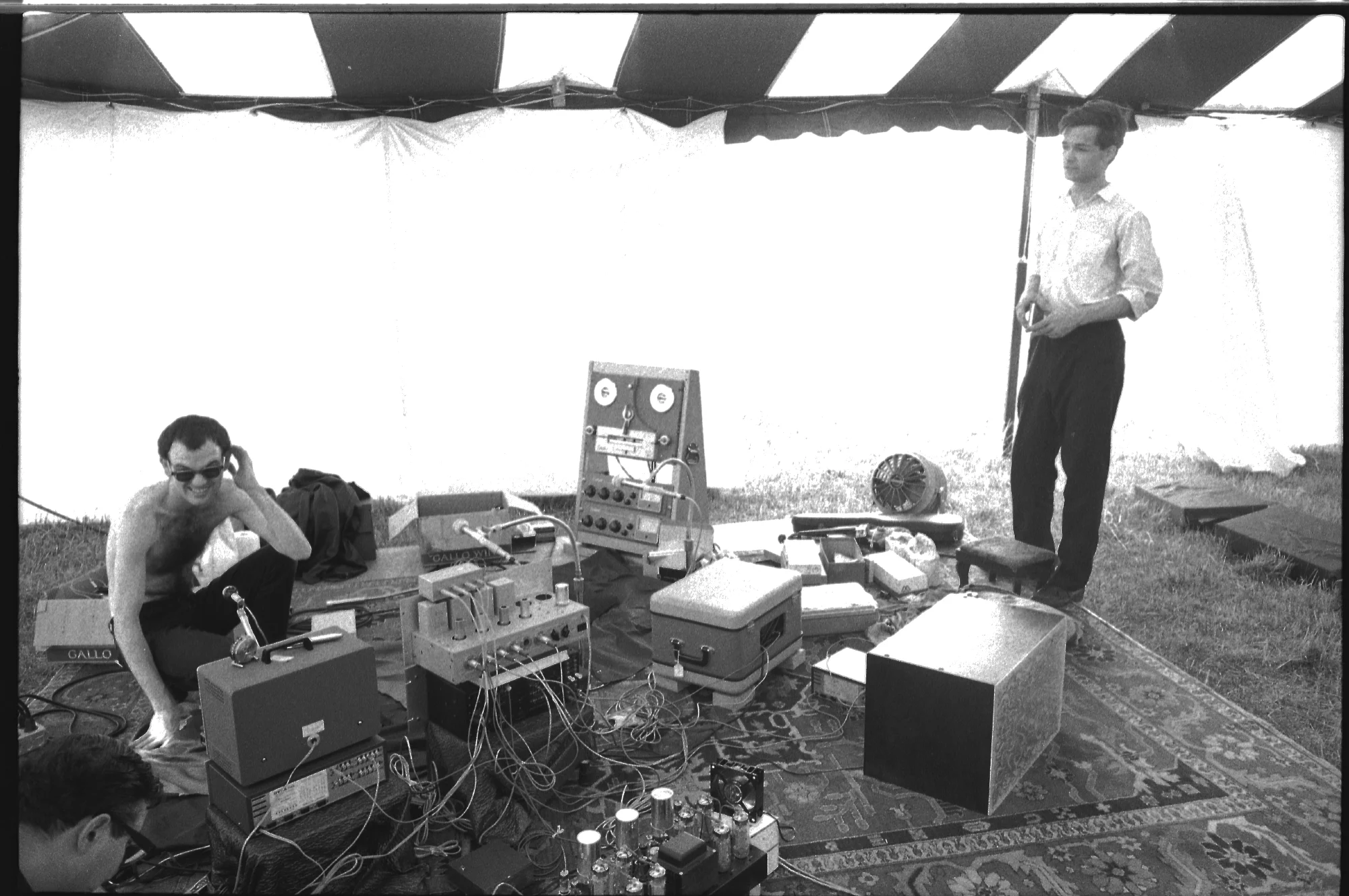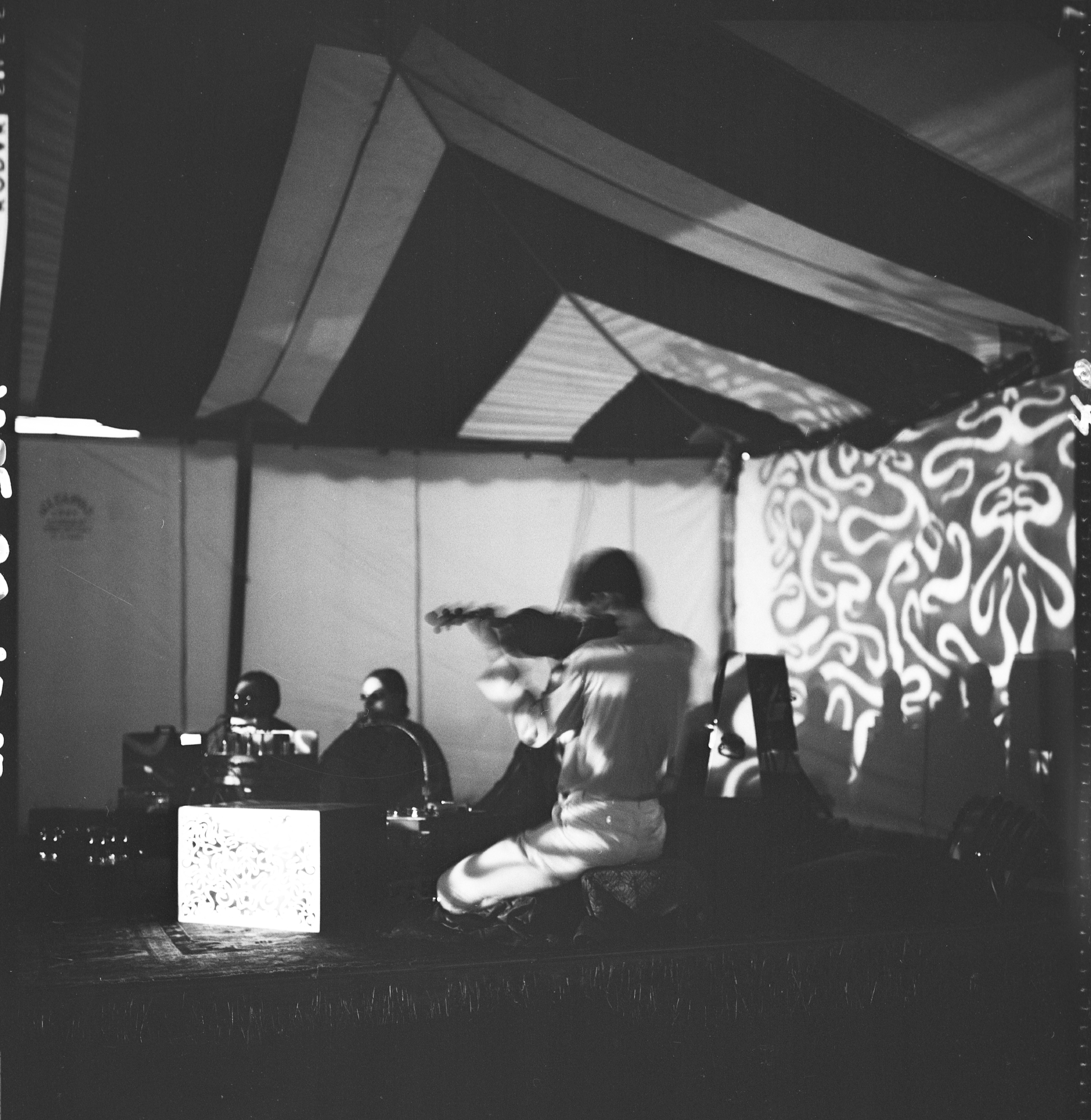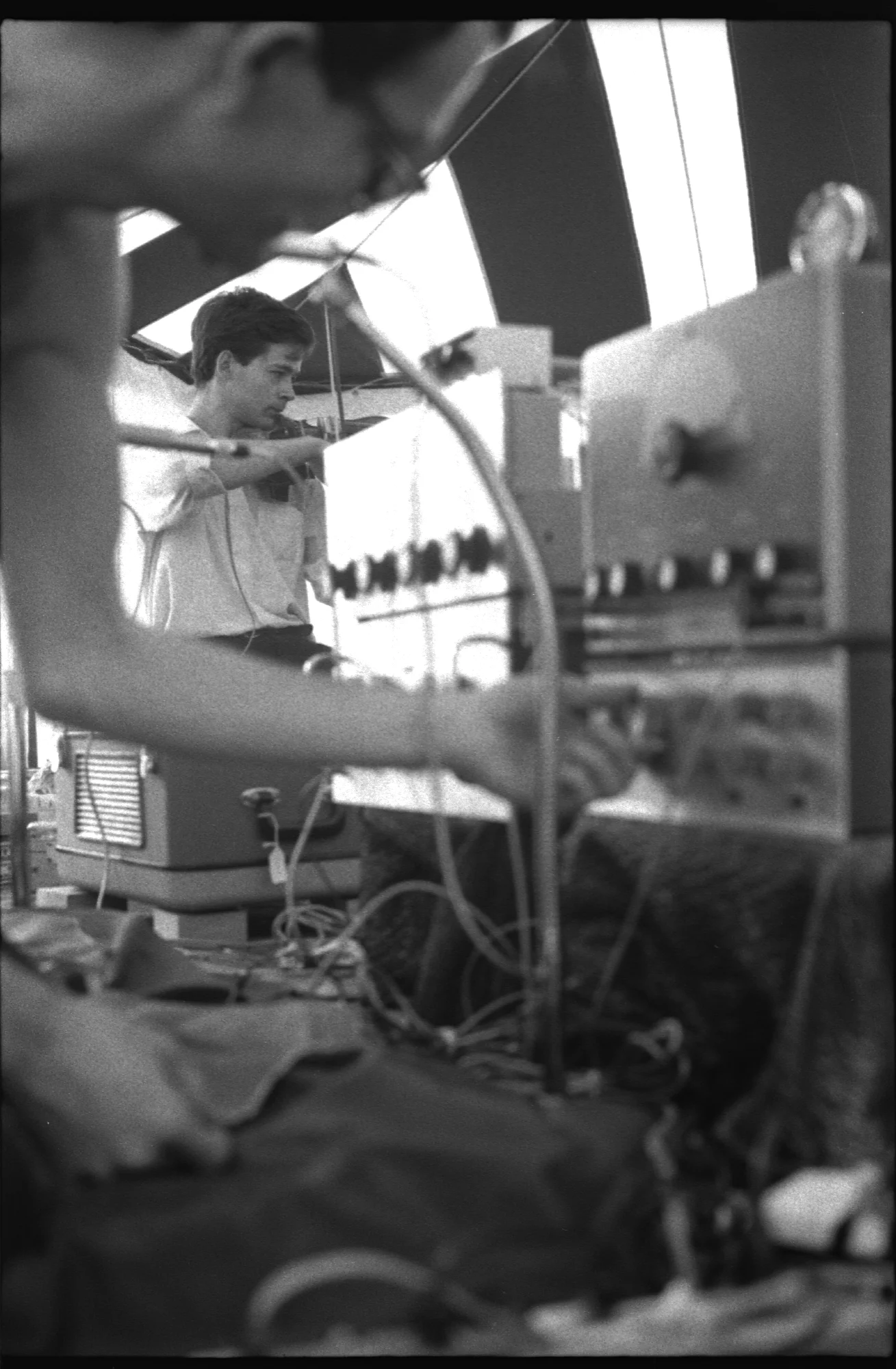"'Outrageous?' You should have heard the Dream Syndicate."
—Lou Reed, in response to critical attacks on his Metal Machine Music LP, 1975
John Cale
Tony Conrad
Angus MacLise
La Monte Young
Marian Zazeela
Day of Niagara (1964)
Inside the Dream Syndicate Vol. I
2000
Table of the Elements
[Tungsten] TOE-CD-74
Compact disc
"In the beginning there was the Drone, the primordial, mind-splitting Om generated by the strings and revolutionary lost-chord Zeitgeist of 1960's group the Dream Syndicate."
Rolling Stone
"'Outrageous?' You should have heard the Dream Syndicate."
Lou Reed, in response to critical attacks on his Metal Machine Music LP, 1975
From 1962 through 1965 John Cale, Tony Conrad, Angus MacLise, La Monte Young and Marian Zazeela participated in a collaborative ensemble that articulated the Big Bang of "minimalism." Utilizing long duration and precise pitch, they forged an aggressively mesmerizing "Dream Music"—denying the activity of composition and elaborating shared ideas of performance and improvisation. However, the many rehearsal and performance recordings from this period were repressed, and remained inaccessibly buried until this moment. Now, with the recent discovery of an additional cache of tapes, digitally restored and remastered, the world can step inside the Dream Syndicate for the very first time.
"This is a 31-minute drone. It's also probably the most important historical release of the year. After a decades-long wait, we're finally able to hear the original Dream Syndicate, the legendary ensemble of '62-'65, which influenced thousands solely through its reputation. It's the bite of Tony Conrad's razor-sharp violin, together with the blistering howl of John Cale's prepared viola, which makes this music so much more than so much of what's come after it. Conrad and Cale are the motor, producing a sound like the world itself exploding, only in slow motion and with absolute precision. An instant classic, still jaw-dropping after a 35-year hibernation."
Other Music
"Lou Reed's infamous Metal Machine Music; Jim O'Rourke's unlikely entrance in the pantheon of indie rock; and Sonic Youth's worship of the avant-garde; these instances and countless others were all born from the same seed: the legend of the Dream Syndicate. One of the most significant and controversial releases of 2000, Inside the Dream Syndicate is the high-throttle point when 20th Century Classical almost became rock 'n' roll. This is the Big Bang of Minimalism."
Pitchfork
"These recordings are (part of) a library of effort that represented, for Tony and I at least, a labour of love. The power and majesty that was in that music is still on these tapes."
John Cale
"The great missing link between classical and popular music—and Eastern and Western music—of the late 20th century. A monumental achievement."
Creative Loafing, Atlanta
"No lie, this might be the most historically significant music release of the last 20 years . . . A fantastic piece of deeply ecstatic sound."
Aural Innovations
"A heavenly din of hellish proportions. Definitely a coup for one of the most interesting labels in America, Table of the Elements."
Earpeace
“One of the most important recordings to emerge from the mid-1960's, a product of extraordinary sonic force.”
Boomkat
"A bracing and powerful document of a hugely influential ensemble that changed the sound of modern music."
Chicago Tribune
"Number 1 'Not-Pop' Release of 2000"
LA Weekly
"This music will drill you a third eye."
The Bob
"Downright loud and vicious."
Blastitude
"Exhilarating."
New York Times
"A bombshell."
Art Papers
"Amazing."
Village Voice
"Mindbending."
Spin
"The skyscraping wall of amplified string drone that is erected here towers over almost everything. Coupled with Cale's hypnotic, deafening, avant-rock viola is Conrad's equally impressive double-stop violin playing. Together they produce the sound illusion of some huge electrical generator, a grinding musical turbine that is forever shooting sparks to ignite the imagination... Day of Niagara is an incredible piece of music. That it exists and is, at last, available to anyone who wants to hear it is nothing short of a miracle. Rejoice!"
The Wire
“Ladies and gentlemen, forget about floating in space. We are floating in dreams-- dreams woven of sustained overtones, duration and pitch playing tricks on our ears and distorting our sense of time and place. It began with this, funny enough. Lou Reed's infamous Metal Machine Music; Jim O'Rourke's unlikely entrance in the pantheon of indie rock; all those SYR EPs and Sonic Youth's rectum-suffocated worship of the avant-garde; these instances and countless others were all born from the same seed: the legend of the Theatre of Eternal Music, La Monte Young's Dream Syndicate.
“One of the most significant and controversial releases of 2000, Inside the Dream Syndicate offers a glimpse behind the mysterious curtain. It's what you might have heard had you been fortunate and bold enough to sit in on one of the Dream Syndicate's legendary '60s performances. Mind-numbing waves of amplified strings, slowly bowed to maintain overlapping drones the likes of which you never thought you'd ever want to listen to-- alienating, enveloping sound, seemingly devoid of notation and sense.
"’Outrageous!’ was the cry when Lou Reed unleashed Metal Machine Music. ‘You should have heard the Dream Syndicate,’ was Reed's response. But don't let the band's name fool you: they're not to be confused with the Paisley Underground psych-pop band that adopted the moniker as a high-brow homage in the early '80s. This is the high-throttle point when 20th Century Classical almost became rock 'n' roll. This is the Big Bang of Minimalism. And just look at the star power: a pre-Velvets John Cale on viola; venerable avant-garde composer and filmmaker Tony Conrad on violin (he was Mercury Rev's mentor at SUNY Buffalo, don'tcha know); poet and percussionist Angus MacLise on tabla; and one of the weirdest, most visionary of artistic marriages in John Cage protégé La Monte Young and visual artist Marian Zazeela, who provide vocal drones and conceptual direction to the project.
“La Monte Young owns the original performance and rehearsal recordings of the Dream Syndicate and refuses their release, much to the frustration of Cale and Conrad. He insists that he should be credited to the sole "composer" of the music-- himself. Cale and Conrad have always maintained otherwise, that it was a collaborative effort in performance and improvisation, and that they shall never cede complete authorial credit to Young alone. This dispute, along with Young's intractable perfectionism, has prevented the world for the past 35 years from hearing just what those five headcases were up to.
“However, some high-quality bootlegs ("an additional cache of tapes," it's said) have surfaced, so here we have it: a healthy dose of controversy and confusion, and the first semi-legit release of Dream Music ever, credited to all five. La Monte Young is pissed, noting imperfections in the mix, length, etc. But any way you cut it, avant-garde indie Table of the Elements has balls, and this release is ideal.
“This music is not meant to be listened to on headphones. It is difficult, should fill space, bounce off walls, clear rooms, and mess with your head. Appropriate volume levels do not exist for what is on this disc. Originally, Dream Syndicate performances were debauched night-long endurance tests, presaging the vibrant rave scene that would follow. Goodbye 20th Century? I think not. The past always comes back to haunt you.”
Pitchfork Media
April 30, 2000
The Theater of Eternal Music performing in 1965. From left, Tony Conrad, La Monte Young, Marian Zazeela and John Cale.









